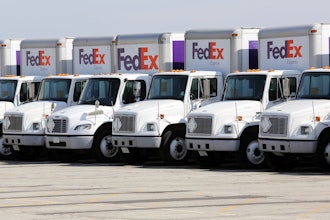With Amazon.com becoming a bigger and bigger part of our every day lives, distributors' online sales orders continue to grow at a rapid pace, and some struggle to keep up. E-commerce is a must for anyone to survive in the B2B industrial market. Now with Amazon Business, distributors have a built-in resource at their disposal for selling excess inventory.
Customers ordering online expect speedy delivery, and a slow sales ordering process doesn't help.
Free Whitepaper: The Consumerization of B2B Multi-Channel Commerce
I recently chatted with Brent Halverson, CEO of Conexiom, a service dedicated to delivering accurate sales order automation so that distributors can keep their focus on customers and not entering orders. He discussed why sales order automation is key, and how businesses should take advantage of Amazon Business or other online retailers in addition to their own e-commerce platform for sales, regardless of company size.
Mike Hockett: What are the advantages of utilizing a sales automation service like Conexiom?
Brent Halverson: Customers come to us and say they're selling through an Amazon or Microsoft site and now they're getting higher orders. They'd start to sell excess inventory, leveraging that online retailer. When someone bought one of their excess products, they'd get an email from Amazon, and they'd have to create the order form. As orders increased, they had a hard time getting orders into their system quickly. Amazon expects them to be timely to get them shipped out quickly. So that company asks us "How can we be more efficient?" We enhanced our solution. We take that Amazon email, figure out where the order is in Amazon, create a map to go in and do the shipping info and do sales orders ont he back ends. All of that allowed that company to do orders faster with less staff.
Those orders that are coming by email today, someone has to look at the order, log in, and print it out to the system. We can take that order, go into Amazon in an automated way with the right shipping information. It allows it to be fulfilled much quicker. If you want to sell direct to end customers and want to do it quickly, automation is key.
MH: Selling on Amazon would certainly be a viable option for a distributor just getting into e-commerce, or a small distributor without the resources to invest in creating their own e-commerce site. But what about for those larger distributors that already have their own, well-established e-commerce site?
BH: It plays into a couple things. For example, there's a running shoe I like and manufacturer that makes them. Every year they change shoe model numbers and come up with new shoes. I want to find this shoe and what the product number is. When I Google that part number, the first 10 or 12 searches that came back were all Amazon. In the end, I bought from someone I have no idea who it is since it’s represented as Amazon. I have no idea how big company is. Even if I was a large reseller that had a large presence, I still may not have sold those shoes on my own website.
MH: Is there a pride factor involved? In that distributors want online sales to be from their own website?
BH: Let's say you're a manufacturer selling through distribution. You probably don't want your customer to know you're selling through another online retailer. On Amazon, the customer can see who the supplier is who's selling the product, but most suppliers aren't represented as themselves. They're represented as Amazon or someone else.
If distributors want to play in this new way of getting rid of excess inventory, doing it on Amazon or another retailer is the way. We've seen a big uptake on people using these microsites. A lot of these distributors using them are big.






















